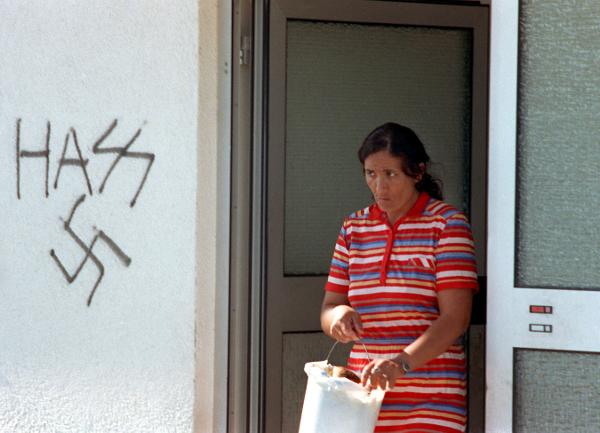Source

Source: picture-alliance / dpa (c) dpa - Bildarchiv
In the 1990s, xenophobic riots and outbursts shocked a reunified Germany. In 1991 alone, a total of 1,483 right-wing acts of violence were registered – five and a half times as many as in the previous year. Housing for asylum seekers and foreigners' private homes were targeted by arsonists, and individual foreigners were brutally attacked by right-wing groups. In absolute terms, the number of xenophobic attacks in the 1990s was markedly higher in the old Western federal states (75% of reported cases) than in the new Eastern ones (25% of reported cases). But since there were far fewer foreigners in the Eastern states, the attacks against them were more statistically significant – meaning that, in relative terms, xenophobia was much more prevalent in the states of the former GDR. Between 1990 and 2005, acts of xenophobic violence claimed 136 lives (documented number) in all of Germany.
This photo shows a female resident of a home for asylum seekers and ethnic German remigrants [Aussiedler] in the small town of March im Breisgau (Baden-Württemberg). As the woman exits the residence, pail in hand, she glances nervously to the side. A swastika has been spraypainted on the building's façade. Above it is the neo-Nazi slogan “Hate” [Hass].

Source: picture-alliance / dpa (c) dpa - Bildarchiv